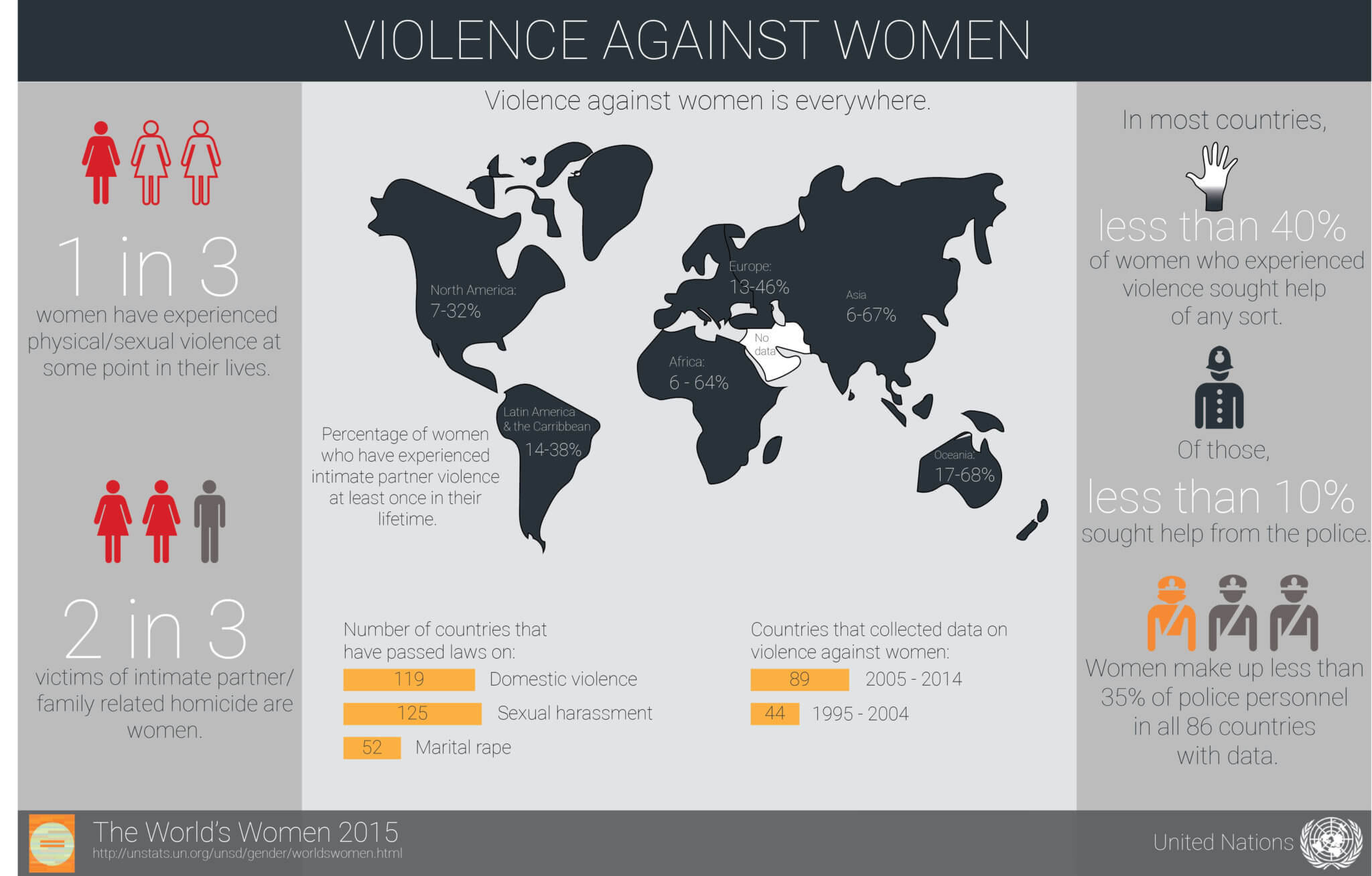Rema Sundar
Trivandrum, Kerala, India
 |
Domestic violence awareness through film
When four-time Grammy Award winner Tracy Chapman crooned “Last night I heard the screaming,” she was reflecting on a global public health problem. Instances of abuse and violence do not discriminate based on wealth, race, or education. ‘The World’s Women 2015″ report from the United Nations stated: “One in three women worldwide experience physical or sexual violence at some point in their lives.”1 Victims of domestic violence face long-term physical and mental health problems with deep-rooted emotional scars. The abused woman may battle depression, anxiety disorders, impaired sexual and reproductive health, and increased vulnerability to HIV and suicide.2
Like any public health issue, domestic violence needs a multisectoral response including education and sensitization efforts. The entertainment industry, for example, has provided a few significant works that have given voice to the pain of domestic violence victims.
Perhaps the earliest creation to deal with the angst of a victim is the 1984 production The Burning Bed, based on a book by Faith McNutty. The film’s protagonist, having endured violence at the hands of her husband for thirteen years, sets ablaze the bed in which he was sleeping. Her trial ends with a verdict of not guilty, as the judge and the jury understood that relentless suffering pushed her to the extreme act.
The film Provoked (2006) shares a similar plot drawn from the real-life story of Kiranjit Ahluwalia of Punjab, India who was battered by her husband in the UK. Unable to withstand repeated physical and sexual assaults by her spouse, Kiranjit sets fire to his feet, inadvertently killing him. The protagonist is tried for murder; her legal journey before being set free forms the narrative.
Based on Alan Duff’s novel of the same name, Once Were Warriors (1994) showcases a victim’s return to her Maori culture to defy domestic abuse. Set in New Zealand, the film depicts Beth being violated after her husband Jake loses his job. It also brings to light how domestic violence may affect children; her children struggle with criminal activity, drug abuse, and depression.
In Sleeping with the Enemy (1991), the victim flees her violent husband and finds comfort from a kind man. In Dangerous Intentions (1995), two victims stand by each other to thwart domestic violence.
A battered woman may find strength from a film like What’s Love Got to Do With It (1993). Based on the life of the multi-faceted Tina Turner,3 the protagonist focuses on building professional excellence and gains from spirituality. Similarly, in Enough (2002) the protagonist equips herself with self-defense practices to handle an abusive husband.
Domestic violence should not be tolerated in any society. These narratives from the film industry should be part of a larger societal response to educate and raise awareness.
References
- The World’s Women 2015: Trends and Statistics, United Nations Statistics Division. Accessed January 29, 2017. http://unstats.un.org/unsd/gender/chapter6/chapter6.html
- Violence Against Women, World Health Organisation Media Centre. Accessed January 29, 2017. http://www.who.int/mediacentre/factsheets/fs239/en/
- What’s Love Got to Do with It (film), Wikipedia. Accessed January 29, 2017. https://en.wikipedia.org/wiki/What%27s_Love_Got_to_Do_with_It_(film)
REMA SUNDAR, MA, MBA, M.Phil, currently manages a tobacco control public health advocacy project in Kerala, India. She derives great satisfaction from working for development causes. In an earlier assignment for the development of marginalised fisherfolk, she used her analytical writing skills to mainstream their issues and concerns. She has also been a freelance journalist with India’s leading daily ‘The Hindu’ and has often used its space for the less talked about. Her interests include advocacy communication, policy documentation, and training for change.

Leave a Reply